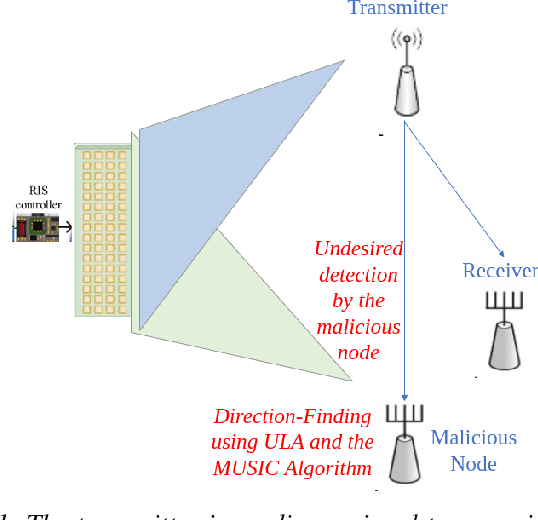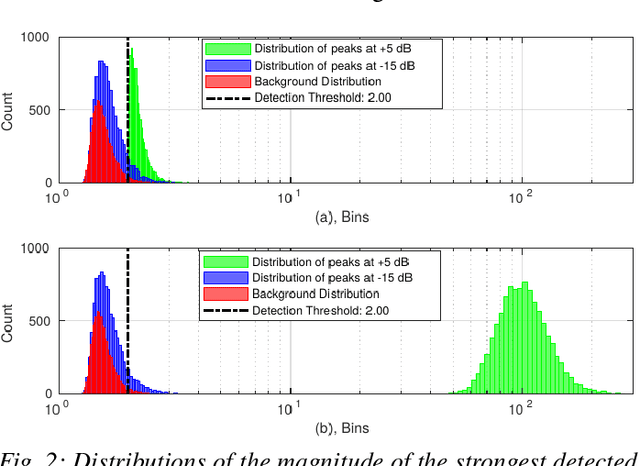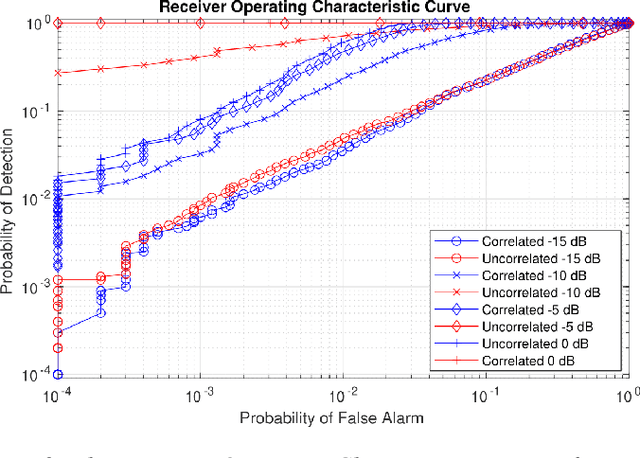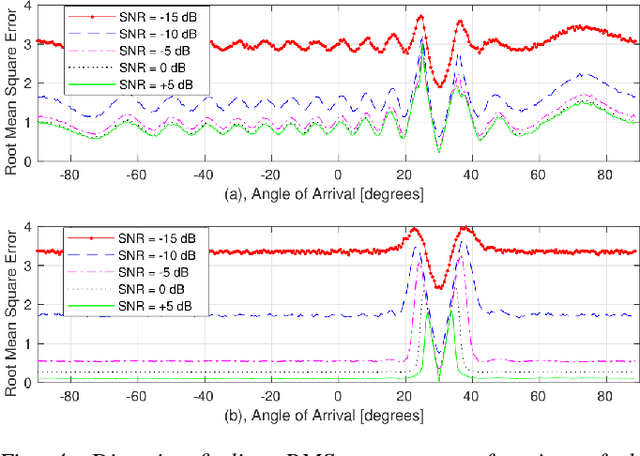Daniel J. Jakubisin
Distributed Uplink Joint Transmission for 6G Communication
Apr 11, 2025



Abstract:This paper investigates the spectral efficiency achieved through uplink joint transmission, where a serving user and the network users (UEs) collaborate by jointly transmitting to the base station (BS). The analysis incorporates the resource requirements for information sharing among UEs as a critical factor in the capacity evaluation. Furthermore, coherent and non-coherent joint transmission schemes are compared under various transmission power scenarios, providing insights into spectral and energy efficiency. A selection algorithm identifying the optimal UEs for joint transmission, achieving maximum capacity, is discussed. The results indicate that uplink joint transmission is one of the promising techniques for enabling 6G, achieving greater spectral efficiency even when accounting for the resource requirements for information sharing.
Linear Jamming Bandits: Learning to Jam 5G-based Coded Communications Systems
Sep 17, 2024



Abstract:We study jamming of an OFDM-modulated signal which employs forward error correction coding. We extend this to leverage reinforcement learning with a contextual bandit to jam a 5G-based system implementing some aspects of the 5G protocol. This model introduces unreliable reward feedback in the form of ACK/NACK observations to the jammer to understand the effect of how imperfect observations of errors can affect the jammer's ability to learn. We gain insights into the convergence time of the jammer and its ability to jam a victim 5G waveform, as well as insights into the vulnerabilities of wireless communications for reinforcement learning-based jamming.
Wireless Mobile Distributed-MIMO for 6G
Sep 03, 2024



Abstract:The paper proposes a new architecture for Distributed MIMO (D-MIMO) in which the base station (BS) jointly transmits with wireless mobile nodes to serve users (UEs) within a cell for 6G communication systems. The novelty of the architecture lies in the wireless mobile nodes participating in joint D-MIMO transmission with the BS (referred to as D-MIMO nodes), which are themselves users on the network. The D-MIMO nodes establish wireless connections with the BS, are generally near the BS, and ideally benefit from higher SNR links and better connections with edge-located UEs. These D-MIMO nodes can be existing handset UEs, Unmanned Aerial Vehicles (UAVs), or Vehicular UEs. Since the D-MIMO nodes are users sharing the access channel, the proposed architecture operates in two phases. First, the BS communicates with the D-MIMO nodes to forward data for the joint transmission, and then the BS and D-MIMO nodes jointly serve the UEs through coherent D-MIMO operation. Capacity analysis of this architecture is studied based on realistic 3GPP channel models, and the paper demonstrates that despite the two-phase operation, the proposed architecture enhances the system's capacity compared to the baseline where the BS communicates directly with the UEs.
Keep It Simple: CNN Model Complexity Studies for Interference Classification Tasks
Mar 06, 2023



Abstract:The growing number of devices using the wireless spectrum makes it important to find ways to minimize interference and optimize the use of the spectrum. Deep learning models, such as convolutional neural networks (CNNs), have been widely utilized to identify, classify, or mitigate interference due to their ability to learn from the data directly. However, there have been limited research on the complexity of such deep learning models. The major focus of deep learning-based wireless classification literature has been on improving classification accuracy, often at the expense of model complexity. This may not be practical for many wireless devices, such as, internet of things (IoT) devices, which usually have very limited computational resources and cannot handle very complex models. Thus, it becomes important to account for model complexity when designing deep learning-based models for interference classification. To address this, we conduct an analysis of CNN based wireless classification that explores the trade-off amongst dataset size, CNN model complexity, and classification accuracy under various levels of classification difficulty: namely, interference classification, heterogeneous transmitter classification, and homogeneous transmitter classification. Our study, based on three wireless datasets, shows that a simpler CNN model with fewer parameters can perform just as well as a more complex model, providing important insights into the use of CNNs in computationally constrained applications.
Probability-Reduction of Geolocation using Reconfigurable Intelligent Surface Reflections
Oct 18, 2022



Abstract:With the recent introduction of electromagnetic meta-surfaces and reconfigurable intelligent surfaces, a paradigm shift is currently taking place in the world of wireless communications and related industries. These new technologies have enabled the inclusion of the wireless channel as part of the optimization process. This is of great interest as we transition from 5G mobile communications towards 6G. In this paper, we explore the possibility of using a reconfigurable intelligent surface in order to disrupt the ability of an unintended receiver to geolocate the source of transmitted signals in a 5G communication system. We investigate how the performance of the MUSIC algorithm at the unintended receiver is degraded by correlated reflected signals introduced by a reconfigurable intelligent surface in the wireless channel. We analyze the impact of the direction of arrival, delay, correlation, and strength of the reconfigurable intelligent surface signal with respect to the line-of-sight path from the transmitter to the unintended receiver. An effective method is introduced for defeating direction-finding efforts using dual sets of surface reflections. This novel method is called Geolocation-Probability Reduction using Dual Reconfigurable Intelligent Surfaces (GPRIS). We also show that the efficiency of this method is highly dependent on the geometry, that is, the placement of the reconfigurable intelligent surface relative to the unintended receiver and the transmitter.
Probabilistic Receiver Architecture Combining BP, MF, and EP for Multi-Signal Detection
Apr 17, 2016



Abstract:Receiver algorithms which combine belief propagation (BP) with the mean field (MF) approximation are well-suited for inference of both continuous and discrete random variables. In wireless scenarios involving detection of multiple signals, the standard construction of the combined BP-MF framework includes the equalization or multi-user detection functions within the MF subgraph. In this paper, we show that the MF approximation is not particularly effective for multi-signal detection. We develop a new factor graph construction for application of the BP-MF framework to problems involving the detection of multiple signals. We then develop a low-complexity variant to the proposed construction in which Gaussian BP is applied to the equalization factors. In this case, the factor graph of the joint probability distribution is divided into three subgraphs: (i) a MF subgraph comprised of the observation factors and channel estimation, (ii) a Gaussian BP subgraph which is applied to multi-signal detection, and (iii) a discrete BP subgraph which is applied to demodulation and decoding. Expectation propagation is used to approximate discrete distributions with a Gaussian distribution and links the discrete BP and Gaussian BP subgraphs. The result is a probabilistic receiver architecture with strong theoretical justification which can be applied to multi-signal detection.
 Add to Chrome
Add to Chrome Add to Firefox
Add to Firefox Add to Edge
Add to Edge